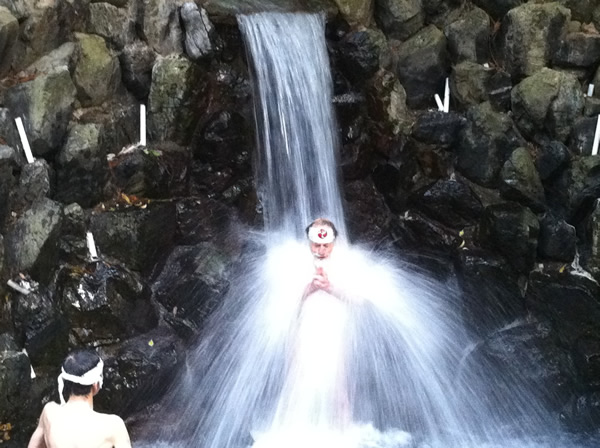Welcome to our newsletter, dear readers.
We start our monthly selection with a technical chapter on seclusion and recollection (khalwa and dhikr) according to the 14th-century Persian Sufi Ala al-Dawla al-Simnani, master of the Kubrawi order. Within the framework of a subtle and complex Islamic cosmological exposition, Simnani elaborates on the different deaths and resurrections along the initiatic path.
The light of the soul surrounds the individual. It resembles a polished door or window on which the sun is shining and from which the reflection is falling on the wall. This light of the soul does not have the power to annihilate (quwwat-i ifna’), but simply helps to illuminate visible things… The sparks of fire that the mystic sees in the beginning are signs of having traversed the element of the fire of one’s existence.
• Our second new library addition is a lecture by Stuart D.B. Picken on the rite of misogi, the Shinto purification by water—in rivers, in the sea or under a waterfall.
Shinto is a religion that concerns itself with purity and purification. It is also a religious tradition that not only brings humanity and nature close together but also seeks to remind humanity that its life is embedded within nature. And within the ritual of misogi this meaning is stressed… stepping into the flowing water in front of the fall, bowing, clapping, and then turning around and standing under the fall, taking the full weight of the water on the back of the shoulders… The entire theology of Shinto is symbolized in the act, in the belief that human nature can be purified and restored by returning to its deepest roots and the place of its origins.
• And we complete our selection with three chapters from the heart of the Native American Lakota tradition, the first pages of Black Elk Speaks, by John G. Neihardt, on the Sacred Pipe, on Black Elk’s early years, and on his Great Vision.
…and there around the big tepee they waited for the sacred woman. And after a while she came, very beautiful and singing, and as she went into the tepee this is what she sang:
“With visible breath I am walking.
A voice I am sending as I walk.
In a sacred manner I am walking.
With visible tracks I am walking.
In a sacred manner I walk.”




